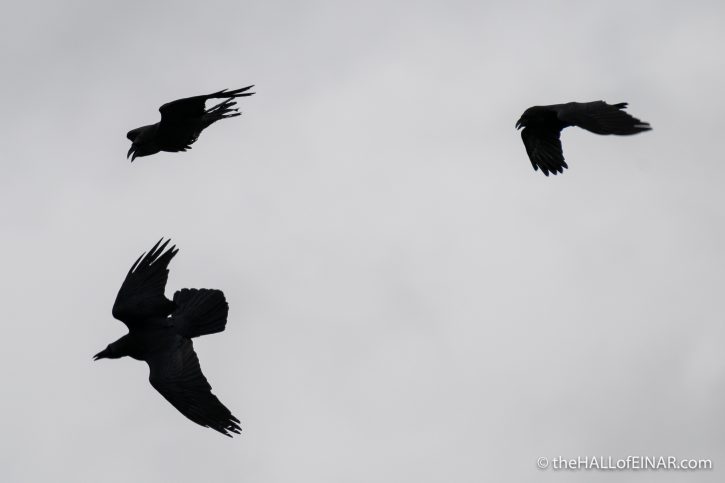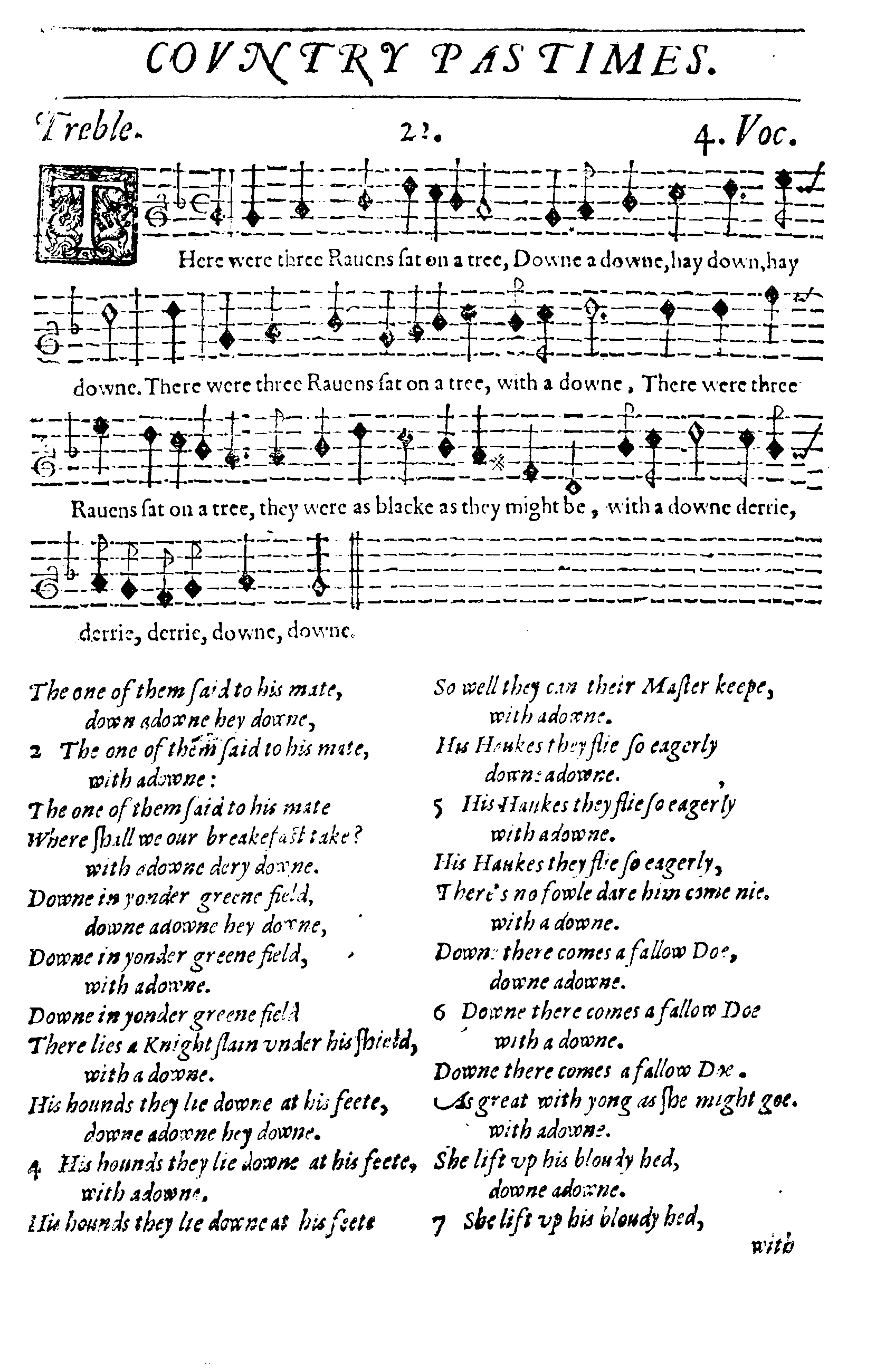The Three Ravens
We’re at RSPB Lodmoor in Weymouth. It’s a grey day. It’s the perfect dramatic atmosphere for Ravens. There are a group of them, performing over the rooftops:

I really want there to be three Ravens in a tree so I can capture the perfect illustration to the ballad The Three Ravens. It’s an English version of The Twa Corbies.
The Three Ravens was originally published in 1611. That was a momentous year in publishing; it was the year the authorised King James Bible was published for the first time. It was the year Shakespeare’s last play, The Tempest, was performed for the first time.
Four hundred years later The Three Ravens is still being performed. This is a beautiful version by The Wilderness Yet:
The Wilderness Yet are Rosie Hodgson on voice and octave mandola with Rowan Piggott on voice, fiddle, cittern and harmonium. Buy their album here.
There are three Ravens here and they are chasing one another, cawing boldly:

Here’s another version of The Three Ravens by Bruise, one of the most talented and inspiring duos around, who always come up with a different interpretation of whatever they do:
The full title of Thomas Ravenscroft’s book from 1611, which contains The Three Ravens, is: Melismata. Mvsicall Phansies. Fitting the Covrt, Citie, and Covntrey Hvmovrs. To 3, 4, and 5. Voyces. Here’s the page with The Three Ravens, showing beautiful notation:

This version is a more traditional one:
It’s a very comforting song if you’re a man, with a dead knight’s hawks and hounds staying faithful to him. A Fallow Doe appears symbolically as the dead knight’s pregnant lover. What’s not very comforting is that she then dies, which is treating her as if she’s his property and no different from the animals he owns.
I did get a photograph of a sitting Raven, but this one was on a wire. I’ll keep trying.

Or maybe this one’s a Crow?
Here’s my final version of The Three Ravens for today, by German experimental and neofolk group Sonne Hagal:
The Three Ravens is deeply embedded in our culture, but not as deeply as one of the other tunes Thomas Ravenscroft collected. In 1609 he published Deuteromelia which contains the first printed version of Three Blind Mice.
What do Ravens mean to you? And which version of The Three Ravens did you enjoy the most?